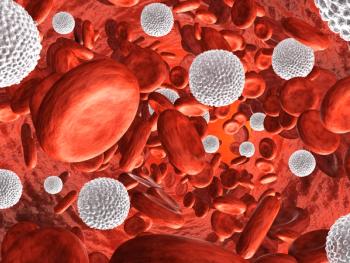
Prognostic Gene Expression Signatures Based on AML Subtype
Prognostic signature associated with AML relapse risk potential harbors gene subsets that apply to only certain patient subgroups.
A prognostic signature associated with relapse risk potential in all patients with AML harbors gene subsets that apply to only certain subgroups of AML patients, as defined by specific molecular characteristics, according to results of research published in Cell Reports.
“Exploiting the specificity and sensitivity of regulatory DNA, we analyze patient samples of multiple clinical outcomes covering various AML molecular subtypes,” wrote authors, led by Caroline R.M. Wiggers, Hubrecht Institute-KNAW & University Medical Center Utrecht, Utrecht, the Netherlands.
In those with AML, different genes in blast populations probably play a role in different clinical outcomes and likely hold prognostic value used to tailor therapy, although clinical translation of these signatures is challenging.
Wiggers et al. observed that gene sets that were coregulated in all samples ranged in their prediction of relapse risk dependent on patient subset (ie, molecular risk, molecular aberration, and FAB classification), which shows that certain groups of relapse genes are prognostic in specific patient subgroups. In other words, coregulated subsignatures are better at predicting relapse risk in certain populations of AML patients.
For instance, identifying samples by AML-blast maturation via FAB classification can predict risk of relapse in one patient subgroup. Nevertheless, this means of classification has been outmoded by classification according to the World Health Organization (WHO), which holds more prognostic weight.
“Our data show the prognostic capacity for a specific gene cluster in a FAB subgroup that is independent of the underlying molecular aberration,” wrote the authors. “Thus, we propose that phasing out the maturation stage may be premature, because this information may help assign a patient to a more specific AML subgroup.”
Specifically, Cluster 9 was linked to relapse in monoblastic AML-M5 samples in adults and children. However, in children this cluster of relapse genes chiefly consists of MLL translocations whereas in adults these translocations are uncommon.
Cluster 9 consisted of both DNMT3B and DNMT3A, with DNMT3A often mutated in FAB-M5 patients. As a prelude to further research, the researchers pondered whether changes in DNMT3A and DNMT3B expression are tied to DNMT3A mutations that usually result in loss of function. They posited that expression changes mirror a feedback loop that offsets loss of function. An alternative explanation could be thaf DNA methylation dysregulation via gain or loss of DNMT3A activity could lead to epigenetic cellular instability thus resulting in variants that escape therapy.
Main findings in the study are that multifarious samples are required to yield prognostic signatures via gene expression analysis. Moreover, initiatives to develop single-gene expression signatures with prognostic implications will likely fail.
In conclusion, although data from this study show that classification into distinct subcategories is important, it remains to be elucidated how many subgroup classifications are required to result in clinically efficacious prognostic gene expression signatures. Additionally, the prognostic value of specific expression signatures in all AML subtypes with relation to treatment modification needs to be further studied because treatment intensity relies on kayrotyping and clinical behavior, with clinical outcomes depending on treatment regimen.
Newsletter
Stay up to date on recent advances in the multidisciplinary approach to cancer.

















































































